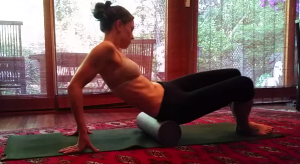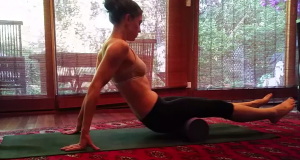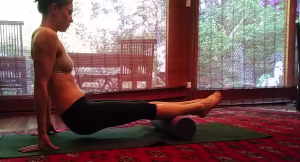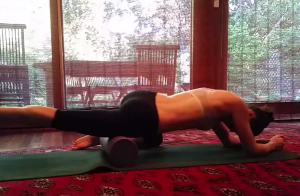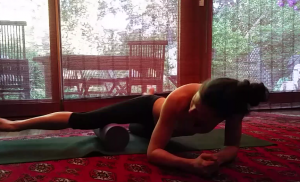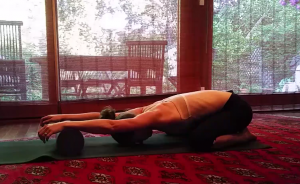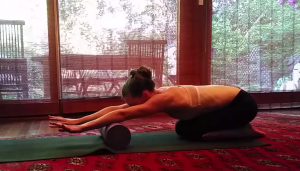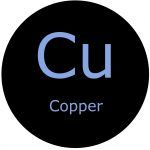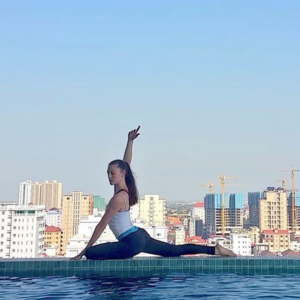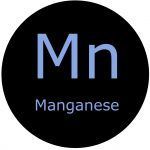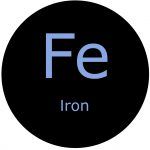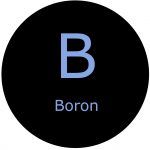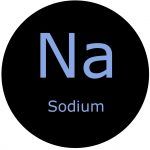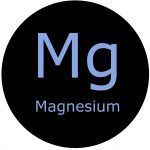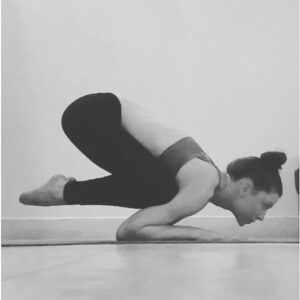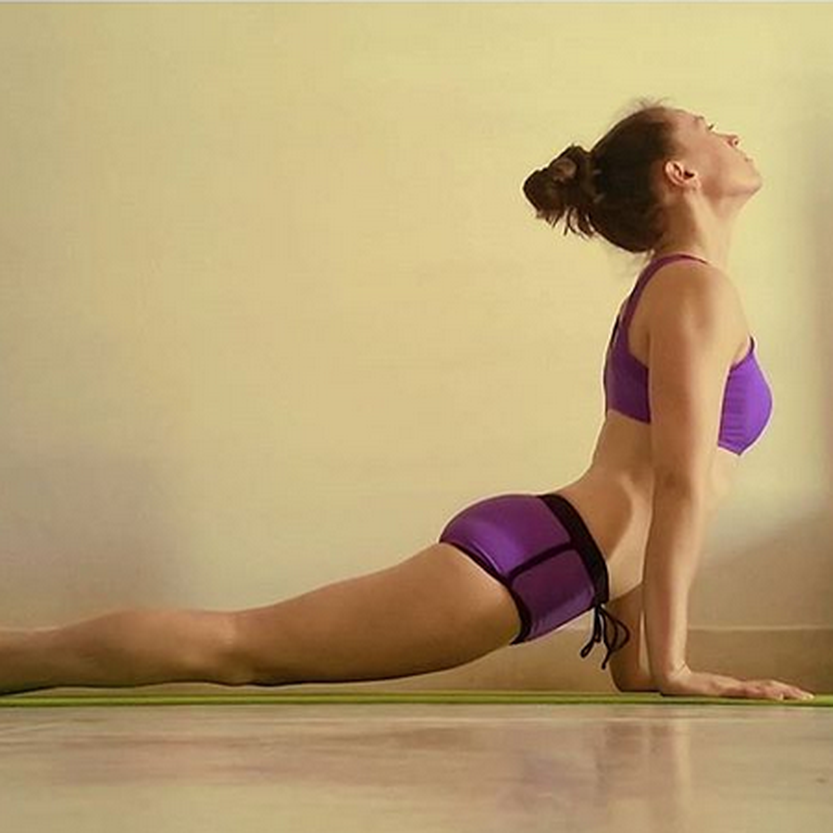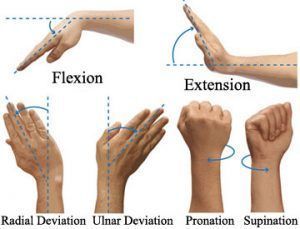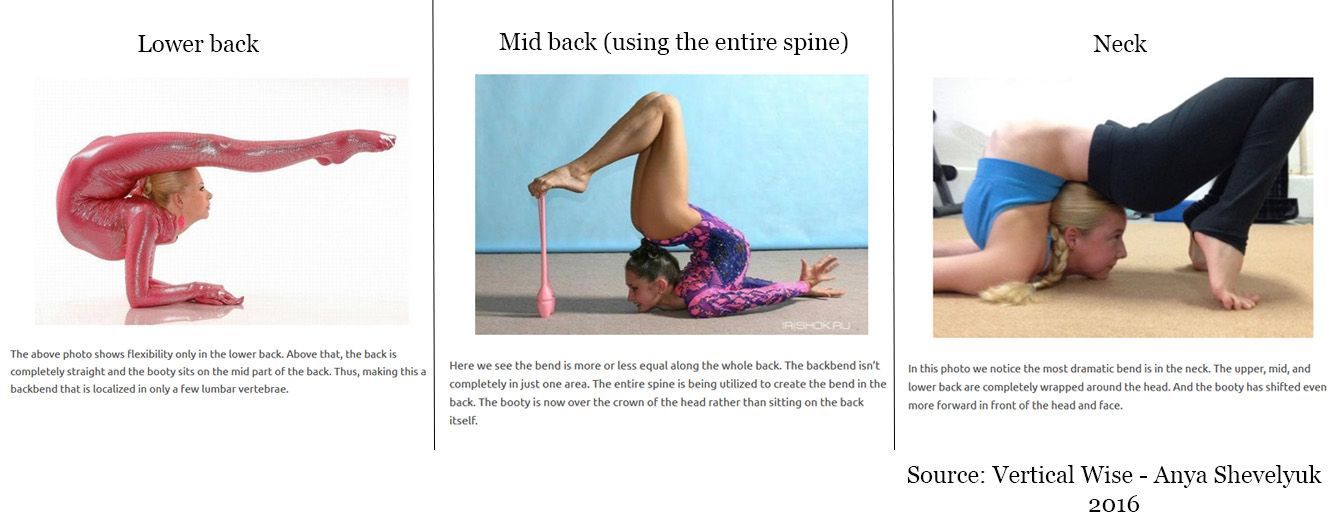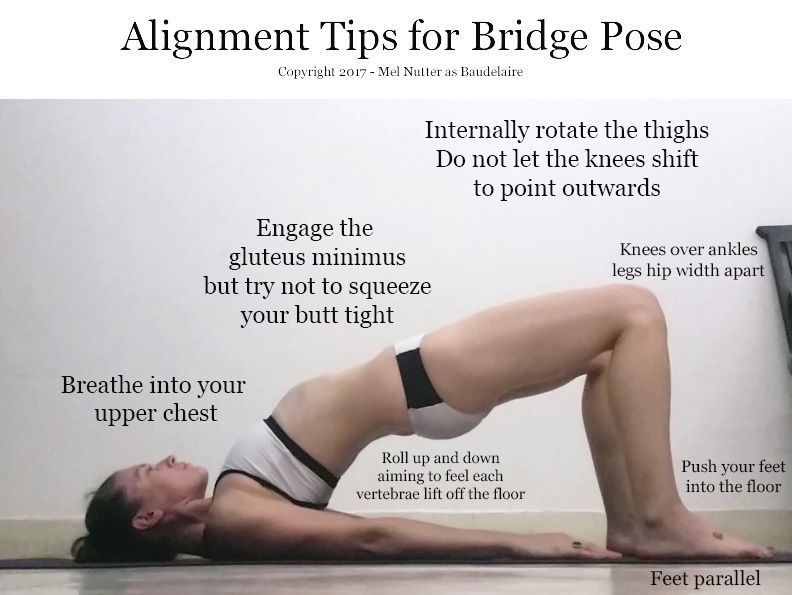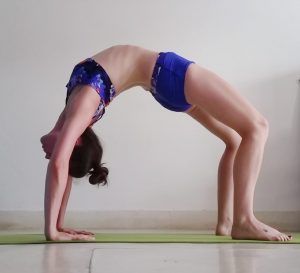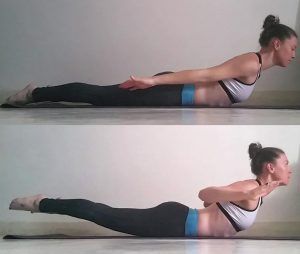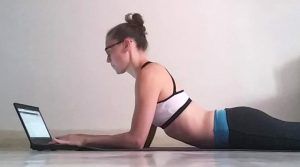I first started foam rolling after subscribing to StudioVeena who recommended it for use before stretching.
In her tutorials she would outline how to roll the large muscles in the legs before flexibility training, as a way to increase blood flow to the muscles and loosen up knots and tight areas before working on regular stretching sequences. Foam rolling is a great way to loosen up before getting on the mat for yoga, or can be a great way to assist with recovery if you find your muscles a little overworked from a workshop or yoga retreat.
Physios and massage therapists sell a variety of foam rollers and spiky balls of all shapes, sizes, and firmness depending on how they will be used. As well as being a great asset to your flexibility training, foam rolling can work wonders on DOMS, and be generally soothing for an active body. Chunky rollers are great for larger muscles. Spiky balls are perfect for getting into smaller muscle groups in the back and shoulders, or for massaging the forearms after training.
When choosing your foam roller, keep in mind your tolerance during a regular massage. The softer the roller the softer the pressure, and the firmer or spikier the roller, the more it will dig in to those tight spots. A deep tissue experience can be effective but you don’t want to be in so much pain that you can’t commit to rolling up and down your leg!
I started with a hard, smooth roller that I picked up at the local Clark Rubber supplier! It’s the perfect density to use everyday, before stretching or after training, large enough to roll my hamstrings, quads, and glutes, but also small enough to throw in the car if I need to bring it along to a comp or showcase. Now I prefer something a bit chunkier that helps release tight glutes or hamstrings.
Foam rolling is a “self-myofascial release technique” that works by massaging the fascia and muscle fibers. Research suggests,
“Self-myofascial release causes an increase in short-term flexibility that lasts for >10 minutes but does not affect athletic performance acutely. Self-myofascial release may also be able to increase flexibility long-term, in programs of >2 weeks.”
Sounds pretty good right?
Here are some photos of how I use my roller at home. You probably need a space similar to what you use for yoga to make sure you can lay down and roll in various directions. It’s a great practice to turn into a habit though, and once you know what you are doing, it’s easy to incorporate into your day, even while watching television!
I like to start on my legs and glutes, remembering to roll up and down the entire muscle and at various angles.
While sitting on the foam roller, I angle my body to either side, rolling in the direction of the muscle fibers. By placing my foot on the floor or lifting it up, I can change how much of my body weight I am putting in to the motion. Listen to your own body as you roll, slow down on the “sweet spots” – those trigger points that seem to be more painful than others – or even pause for up to 30-60 seconds and you will find the tension begins to release.
My roller is long enough for me to do my hamstrings, calves and quads side by side. Though once again, I can change the amount of pressure I’m applying by rolling them one at a time or leaning into it at a different angle.
Some people also roll their IT Band, along the outside of their thigh. I find this incredibly painful but sometimes have the nerve to work up to it, rolling over from during my quads to catch it as I roll down my outer thigh.
Rolling your adductors, or inner thigh, can be a bit tricky, however those with good hip flexibility may find this easier. Try and cover as much of the muscle as possible and don’t forget to slow down or pause over any trigger points.
Recently I have been rolling my forearms and upper back and then using the roller to perform and overstretch for my shoulders. After rolling up and down my forearms, with the large foam roller and a tennis ball, I sink back into a child’s pose with my arms resting on the roller. Breathing into the stretch, I try to sink my chest down to the floor, feeling the stretch along my upper arms, down my lats under my shoulder, and across my shoulder blades. Coming out of the stretch I try to curl my spine in the opposite direction, remembering to breath as I come out slowly.
Don’t forget to drink lots of water post foam rolling session. Any type of massage increases blood flow around the area and staying hydrated will help the lymphatic system and circulatory system do it’s job, reducing the chance that you’ll feel groggy and need a nap after your session.
If you are interested in learning about how foam rolling could benefit your yoga practice, or at home workout, contact me for a Live Coaching Session!
